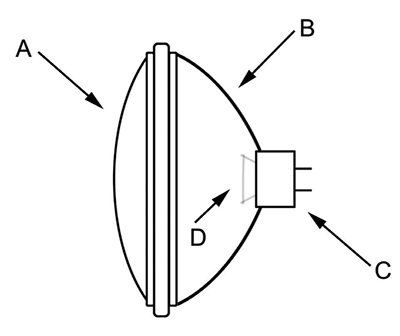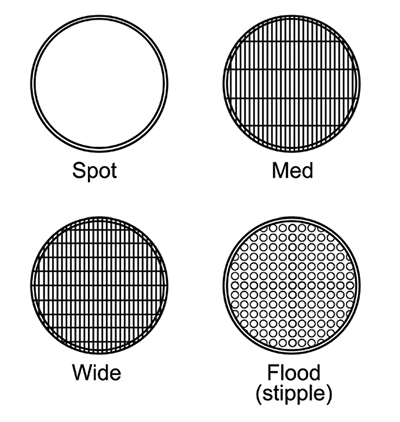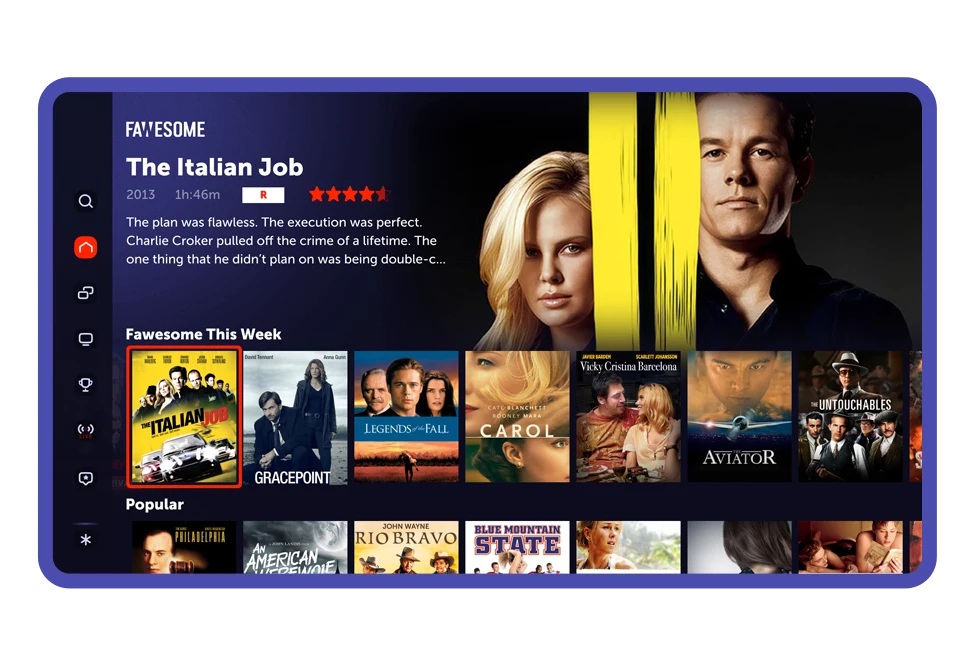The Parabolic Aluminum Reflector

Jay Holben The next in line on our examination of lighting fixtures is the PAR, which is an acronym for Parabolic Aluminum Reflector.
The classic PAR is a reflector and lamp all in one. It is a sealed-beam lamp, like an old-school car headlight. The rear of the envelope (the glass enclosure of the bulb) has a parabolic shape and is coated in an aluminum material for a built-in reflector.
The filament of the lamp is placed in the precise focal point of the parabolic reflector so that the light rays exiting the lens are parallel. This creates a focused beam of illumination from a compact, lightweight lamp.

Fig. 1: PAR Diagram

Fig. 2: PAR Lenses The PAR has four major components: lens (A); reflector (B); base (C); and filament (D). (Fig. 1.)
As the PAR has a fixed relationship of reflector, lamp and lens, the only way to change the spread of the light is to change the bulb (or, in higher-end HMI PARs, change the lens). PARs typically come in very narrow spot, narrow spot, medium flood and wide flood varieties. The quickest way to tell the difference is, the more “stuff” you see on the lens, the wider the spread of the light. (Fig. 2.)
As a standard bulb, a PAR is typically used as a wide, intense floodlight. You’ll see them often used for exterior illumination, particularly security lights. Small PAR fixtures are great for “spotty” and intense practical lighting on a set. You often see PAR lamps in overhead recessed lighting in commercial and private venues.
PARs have a size designation: PAR36, PAR64—which is a reference to the diameter of the lens in 1/8-of-an-inch increments. Take the number, divide it by 8 and that will give you the lens diameter in inches. So a PAR64 has an 8-inch diameter lens (64/8 = 8).
PAR USAGE
The simplest professional PAR fixture is the PARcan, which takes the PAR globe and encloses it into a simple metal snoot to make it more of a spotlight fixture. The PARcan is used more often in theatrical and concert lighting than it is in film and television. The last time I used PARcans on a shoot it was at the Encounter Restaurant at Los Angeles International Airport (the spaceship looking building in the center of the airport, which most people mistakenly believe is the control tower). I used 112 PARcans on the ground, pointing straight up, circling around the entire structure to light up the outside wall. They’re a workhorse fixture, but the light is often too harsh for direct use on faces.
The next most common usage of PARs is in a multi-lamped fixture. We use PAR64s in 4-lamp, 6-lamp, 9-lamp, 12-lamp and even 24-lamp configurations, all in one fixture. The 6- and 9-lamp configurations are often called “Maxibrutes” and the 24-lamp is called a Dino or Wendy light. These are often used for nighttime exteriors off a condor or cherrypicker for wide, broad backlight. PAR64s are 1,000 W lamps, so 24 of them in a fixture provide a considerable punch.
The individual lamps in the multi-array fixture can be swapped out for very narrow spot (nicknamed “firestarters” for the intense heat they project in a very tight beam), narrow spot, medium flood or wide flood for different uses. It’s possible to have some wide, some medium and some spot in the same fixture to cover greater distances with the spread of light.
The light beam that comes from the PAR is elliptical in shape and, often, can be rotated vertically or horizontally by spinning the physical lamp itself.
HMI Pars have a sealed beam reflector and clear lens and require an additional lens to be placed in the fixture—they are typically spot (near clear), medium (some facets in the lens), wide (more facets) and stipple, or very wide (the most facets in the lens).
The only other real oddball in the PAR world is the ETC Source Four PAR, which features the same lamp as the ETC Source Four Ellipsoidal Reflector Spotlight, precisely positioned in a parabolic reflector and separate, interchangeable, lenses for spot, medium and flood.
Finally, FAY PAR lamps have a dichroic filter to raise the color temperature to 5,000 K from a tungsten lamp.
Jay Holben is the technical editor of Digital Video and a contributor to Government Video. He is also the author of the book “A Shot in the Dark: A Creative DIY Guide to Digital Video Lighting on (Almost) No Budget.”
Get the TV Tech Newsletter
The professional video industry's #1 source for news, trends and product and tech information. Sign up below.
